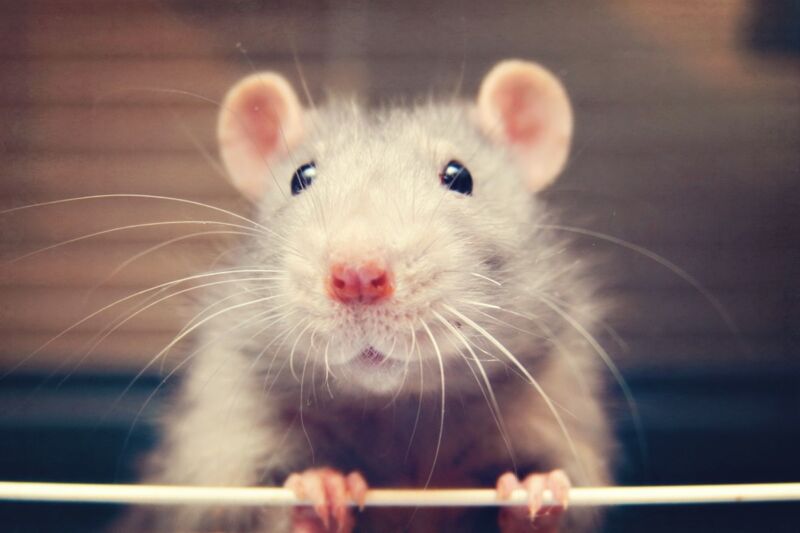
Enlarge / Northwestern University scientists have developed the first mechanical simulation of a rat whisker inside its follicle, to better understand how that sensory input is communicated to the brain. (credit: Niccirf/Getty Images)
Rats, cats, and many other mammals have whiskers, which they typically use to sense their surrounding environment, akin to the sense of touch. But scientists have yet to precisely determine the means by which whiskers communicate that sense of touch to the brain. Now an interdisciplinary team at Northwestern University has come up with a new model to help predict how a rat’s whiskers activate different sensory cells to do just that, according to a new paper published in the journal PLOS Computational Biology. Such work could one day enable scientists to build artificial whiskers as tactile sensors in robotics as well as shed further light on human touch.
“The sense of touch is incredibly important to nearly everything we do in the world, yet it is very difficult to study touch using hands,” said co-author Mitra Hartmann, a biomedical engineer at Northwestern’s Center for Robotics and Biosystems. “Whiskers provide a simplified model to understand the complex, mysterious nature of touch.”
That’s why there is such a long history of studying whiskers (vibrissae) in mammals: rats, cats, tree squirrels, manatees, harbor seals, sea otters, pole cats, shrews, tammar wallabies, sea lions, and naked mole-rats all share strikingly similar basic whisker anatomies, according to various prior studies. The current study focused on rats. Rats have about 30 large whiskers and dozens of smaller ones, part of a complex “scanning sensorimotor system” that enables the rat to perform such diverse tasks as texture analysis, active touch for path finding, pattern recognition, and object location, just by scanning the terrain with its whiskers.





